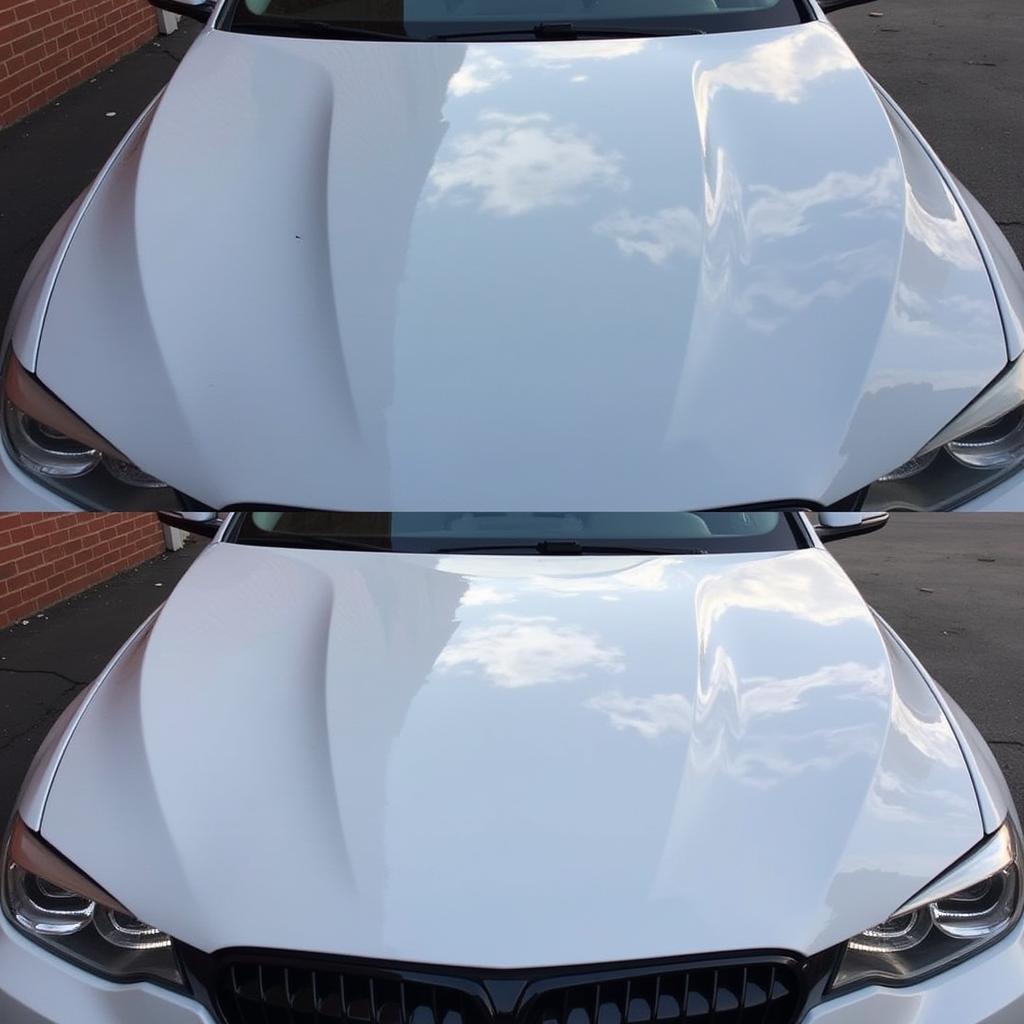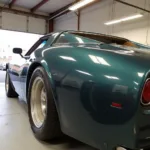Car paint damage repair to hood is a common issue for car owners. Whether it’s a minor scratch, a noticeable chip, or more extensive damage, addressing these issues promptly is crucial for maintaining your car’s appearance and value. This guide provides a detailed overview of hood paint repair, covering everything from identifying the damage to choosing the right repair method and preventing future issues.
Getting your car’s hood repainted can be a significant investment, and the price can vary dramatically based on several factors. The extent of the damage plays a key role – a minor scratch will obviously cost less to fix than significant dent and paint repair. The type of paint used also affects the cost. Premium paints, like pearlescent or metallic finishes, often come with a higher price tag. Finally, your location can also influence the cost, as labor rates and material prices can vary regionally.
Repairing paint damage to your car’s hood not only improves its aesthetics but also protects it from further damage. Exposed metal is vulnerable to rust and corrosion, which can spread and compromise the structural integrity of the hood. By addressing paint issues promptly, you can prevent these problems and maintain your car’s value.
Choosing the right repair method depends on the severity of the damage. For minor scratches and chips, DIY solutions like touch-up paint or paint pens can be effective. However, for more extensive damage, professional repair is recommended to ensure a flawless finish. Silver car paint scratch repair offers detailed guidance on addressing scratches.
Understanding Different Types of Hood Paint Damage
Identifying Scratches, Chips, and Dents
Scratches are superficial marks that often only affect the clear coat. Chips are deeper and expose the base coat or even the metal underneath. Dents, on the other hand, involve deformation of the hood’s surface and often require bodywork before repainting.
What is the difference between a scratch and a chip? A scratch is a surface-level mark, while a chip penetrates deeper, exposing underlying paint layers or metal.
DIY Car Paint Damage Repair to Hood: A Step-by-Step Guide
- Clean the damaged area: Thoroughly wash and dry the hood, paying special attention to the damaged area.
- Assess the damage: Determine the type and extent of the damage to choose the appropriate repair method.
- Prepare the surface: Sand down any rough edges or rust if necessary.
- Apply touch-up paint: Use a touch-up paint pen or brush to carefully fill in chips and scratches.
- Level the paint: Use fine-grit sandpaper to smooth out the repaired area.
- Apply clear coat: Protect the repair with a clear coat application.
- Polish and buff: Restore the shine to the repaired area.
When to Seek Professional Car Paint Repair
For significant damage, such as large dents or deep scratches that expose bare metal, professional repair is highly recommended. Professionals have the expertise and equipment to achieve a seamless and long-lasting finish. Learn more about addressing oxidation with how to repair oxidized car paint spots.
Preventing Future Hood Paint Damage
Protecting Your Car’s Paint from the Elements
Regular washing and waxing can help protect your car’s paint from environmental damage. Parking in a garage or using a car cover can also shield your car from the elements. Car paint chip repair in Essex MD can provide insights into local repair services.
How can I protect my car’s hood from stone chips? Applying paint protection film can help prevent stone chips and other minor damage.
Choosing the Right Car Paint Repair Products
Selecting the Best Touch-Up Paint, Primer, and Clear Coat
Using high-quality car paint repair products is essential for achieving a professional-looking finish. Choose products that are specifically designed for your car’s make and model to ensure a perfect color match. Consider checking out services like car paint repair portsmouth or car repair paint miami florida for professional assistance.
“A high-quality clear coat is essential for protecting the repaired area and ensuring a long-lasting finish,” says renowned automotive expert, Dr. Eleanor Vance, specializing in vehicle aesthetics and restoration. “It acts as a barrier against UV rays, environmental contaminants, and minor scratches, preserving the color and gloss of your car’s paint.”
Conclusion: Maintaining Your Car’s Appearance with Effective Hood Paint Repair
Car paint damage repair to hood, whether DIY or professional, is an important aspect of car maintenance. By understanding the different types of damage and choosing the right repair method, you can keep your car looking its best and protect its value. Addressing these issues promptly prevents further damage and preserves the integrity of your car’s hood.
 Polished Car Hood After Paint Repair
Polished Car Hood After Paint Repair
FAQ
- How much does it cost to repair car paint damage to the hood? The cost depends on the extent of the damage and the type of repair needed.
- Can I repair car paint damage to the hood myself? Minor scratches and chips can often be repaired with DIY methods.
- What type of paint should I use for touch-up repairs? Use touch-up paint that is specifically designed for your car’s make and model.
- How do I prevent future car paint damage to the hood? Regular washing, waxing, and parking in a garage can help protect your car’s paint.
- When should I seek professional car paint repair? Seek professional repair for significant damage, such as large dents or deep scratches.
- How can I find a reputable car paint repair shop? Ask for recommendations from friends, family, or your local mechanic.
- What is the best way to remove scratches from a car hood? The best method depends on the depth of the scratch; consult a professional for deep scratches.
Need support? Contact us via WhatsApp: +1(641)206-8880, or email us at [email protected]. Our customer service team is available 24/7.

